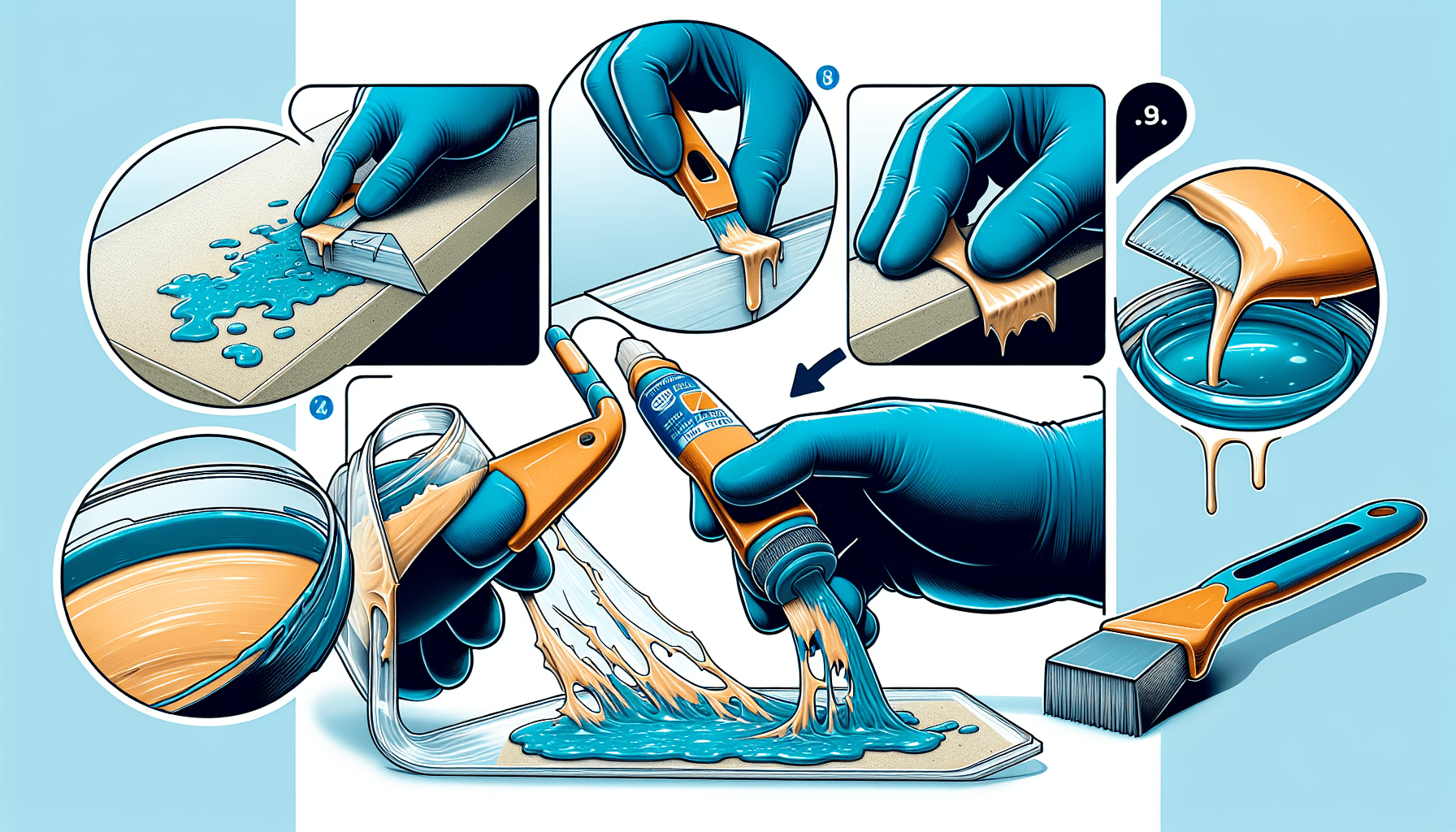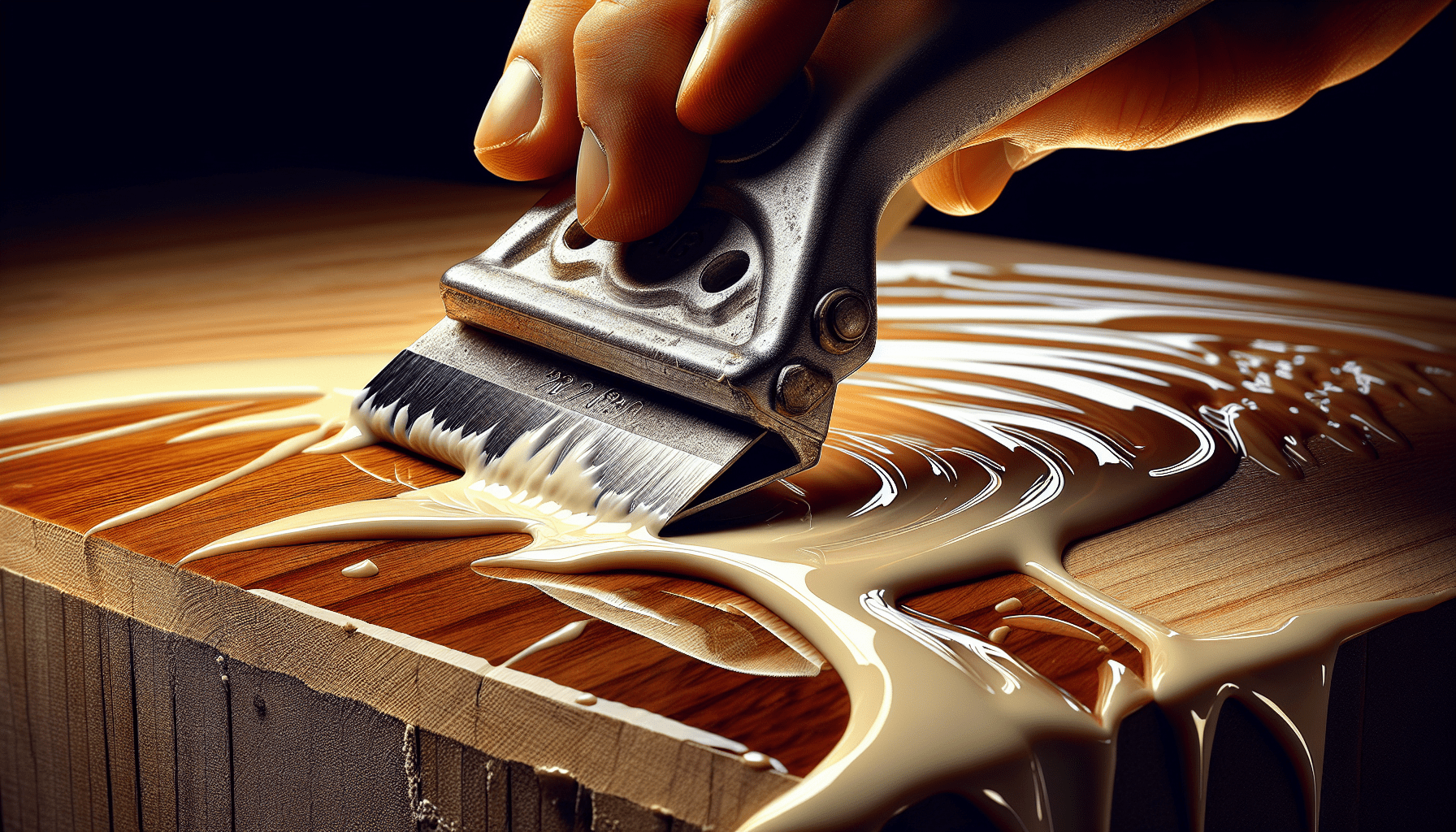Enamel paint has long been hailed for its durability and high gloss finish, making it a popular choice for various surfaces. However, there seems to be some confusion surrounding the composition of enamel paint. Many individuals wonder whether enamel paint is oil based or not. In this article, we will shed light on this matter and provide you with a comprehensive understanding of enamel paint’s properties, highlighting its composition and differentiating between oil-based and water-based formulations. So, if you have ever found yourself pondering over the question “Is enamel paint oil based?”, read on to unravel the truth behind this commonly misunderstood painting medium.

What is enamel paint
Definition
Enamel paint is a type of paint that is known for its glossy finish, durability, and resistance to moisture and stains. It is often used for painting surfaces such as wood, metal, and plastic due to its excellent adhesion properties. Enamel paint comes in different formulations, including both water-based and oil-based options.
Composition
Enamel paint is typically composed of three main components: the pigment, the binder, and the solvent. The pigment gives the paint its color, while the binder acts as the adhesive that holds the pigment particles together and provides durability. The solvent is used to dissolve the binder and allow for easy application. Depending on the type of enamel paint, the composition may vary.
Types of enamel paint
Water-based enamel paint
Water-based enamel paint, also known as latex enamel paint, is a type of enamel paint that has water as its primary solvent. It is often used for interior applications and is favored by many due to its low odor and ease of cleanup. Water-based enamel paint dries relatively quickly and provides a durable finish, making it suitable for a wide range of surfaces.
Oil-based enamel paint
Oil-based enamel paint, also referred to as solvent-based enamel paint, is a type of enamel paint that uses an oil-based binder and solvent. It is known for its superior durability and excellent adhesion properties, making it ideal for tough and high-traffic areas. Oil-based enamel paint takes longer to dry and has a strong odor. It is commonly used for exterior projects or surfaces that require extra protection.
Properties of enamel paint
Glossy finish
Enamel paint is known for its glossy finish, which gives surfaces a smooth and shiny appearance. This finish adds depth and richness to painted surfaces, making them stand out. The glossy finish of enamel paint also enhances color vibrancy and makes surfaces easier to clean.
Durable and long-lasting
Enamel paint is highly durable and long-lasting, making it suitable for areas that are prone to wear and tear. Its strong adhesion properties ensure that the paint remains intact even when exposed to harsh weather conditions or heavy use. This durability makes enamel paint an excellent choice for both interior and exterior applications.
Excellent adhesion
One of the key properties of enamel paint is its exceptional adhesion. This means that the paint adheres tightly to the surface it is applied to, creating a strong bond. This property allows enamel paint to adhere well to various materials such as wood, metal, and plastic. The excellent adhesion ensures a long-lasting and professional-looking finish.
Resistance to moisture and stains
Enamel paint has a high resistance to moisture and stains, making it suitable for areas that are exposed to water or other liquids. Its non-porous nature prevents liquids from seeping through the painted surface, protecting it from damage or discoloration. This resistance to moisture and stains is particularly advantageous for surfaces in kitchens, bathrooms, and other areas prone to spills or water exposure.
Is enamel paint oil based
Overview of enamel paint bases
Enamel paint can be categorized into different bases, including water-based and oil-based. Each base has its own advantages and considerations, depending on the specific project and surface.
Understanding oil-based enamel paint
Oil-based enamel paint refers to enamel paint that uses an oil-based binder and solvent. It is known for its superior durability, excellent coverage, and resistance to wear and tear. Oil-based enamel paint is often recommended for projects that require extra protection, such as painting exterior surfaces or high-traffic areas.

Advantages of oil-based enamel paint
Superior durability
One of the main advantages of oil-based enamel paint is its superior durability. This type of paint forms a tough and resilient finish that can withstand harsh weather conditions, UV exposure, and heavy use. It is less prone to chipping or peeling, ensuring that the painted surface remains intact and attractive for a longer period of time.
Excellent coverage
Oil-based enamel paint offers excellent coverage, meaning that it can effectively hide imperfections and provide a smooth and even finish. It has a higher concentration of pigments, which allows for better color saturation and opacity. This quality makes oil-based enamel paint an ideal choice for surfaces that require full coverage and a flawless appearance.
Resistance to wear and tear
Due to its strong adhesion properties and durable formulation, oil-based enamel paint is highly resistant to wear and tear. It can withstand frequent cleaning, abrasion, and impacts without losing its luster or integrity. This resistance to wear and tear makes it a suitable option for surfaces that are exposed to heavy use or constant contact, such as doors, furniture, or trim.
Ideal for high-traffic areas
Oil-based enamel paint is particularly well-suited for high-traffic areas that require added protection. Its durability and resistance to wear make it an excellent choice for surfaces that are frequently touched, bumped, or exposed to moisture. It can withstand the rigors of daily use and remain looking fresh and vibrant for an extended period of time.
Disadvantages of oil-based enamel paint
Strong odor
One of the main disadvantages of oil-based enamel paint is its strong odor. The solvents used in oil-based paints release volatile organic compounds (VOCs) that can be harmful if inhaled in excessive amounts. Proper ventilation is essential when using oil-based enamel paint to minimize exposure to these fumes.
Longer drying time
Compared to water-based enamel paint, oil-based enamel paint takes a longer time to dry. It typically requires several hours or even days for the paint to fully cure and become dry to the touch. This longer drying time can be inconvenient, especially when working on projects that require quick completion or multiple coats of paint.
Difficult cleanup with solvents
Cleaning brushes and other tools used with oil-based enamel paint can be challenging. The solvent used in the paint requires the use of additional solvents or thinners for effective cleanup. These solvents can be harsh and require careful handling and disposal. Improper cleanup can lead to environmental contamination and health hazards.
Not environmentally friendly
Oil-based enamel paint is not considered environmentally friendly due to its high VOC content and the need for solvents during cleanup. VOCs contribute to air pollution and can have adverse effects on human health and the environment. The disposal of solvents used in cleaning oil-based enamel paint also poses environmental risks if not done properly.
Alternatives to oil-based enamel paint
Water-based enamel paint
Water-based enamel paint, also known as latex enamel paint, is a popular alternative to oil-based enamel paint. It offers many similar advantages, such as a glossy finish, excellent adhesion, and resistance to moisture and stains. Water-based enamel paint has low odor, dries faster, and can be cleaned up easily with water, making it a more convenient and environmentally friendly option.
Acrylic enamel paint
Acrylic enamel paint is another alternative to oil-based enamel paint. It is a type of water-based paint that contains acrylic as the binder. Acrylic enamel paint provides a durable finish, good adhesion, and excellent color retention. It dries quickly and can be cleaned up with water, making it a convenient choice for various projects.
Safety precautions when using oil-based enamel paint
Use in well-ventilated areas
When using oil-based enamel paint, it is important to work in a well-ventilated area to minimize exposure to fumes. Open windows and doors to allow fresh air to circulate, or use fans or exhaust systems to remove fumes from the workspace. If working indoors, consider using a respirator to further protect yourself from inhaling harmful vapors.
Wear protective gear
When working with oil-based enamel paint, it is crucial to wear proper protective gear to safeguard your health. This includes wearing gloves, safety goggles, and a dust mask or respirator. The gloves will protect your skin from direct contact with the paint, while the goggles and mask will prevent any accidental ingestion or inhalation of harmful particles or fumes.
Dispose of properly
Oil-based enamel paint and the solvents used for cleanup are considered hazardous waste and should be disposed of properly. Do not pour leftover paint or solvents down the drain or into the regular trash. Contact your local waste management facility to inquire about the appropriate disposal methods and locations in your area.
Tips for using enamel paint
Prepare the surface
Before applying enamel paint, proper surface preparation is essential for optimal results. Clean the surface to remove any dirt, dust, or grease using mild soap and water or a suitable cleaner. Sand the surface if necessary to create a smooth and even base for the paint to adhere to. Fill any cracks or imperfections with a suitable filler and ensure that the surface is completely dry before painting.
Apply thin, even coats
To achieve a professional finish with enamel paint, it is important to apply thin and even coats. Thick applications of paint can lead to drips, sagging, or uneven drying. Use a high-quality brush or roller designed for enamel paint and apply the paint in smooth, overlapping strokes. Allow each coat to dry thoroughly before applying the next layer.
Allow proper drying and curing time
Oil-based enamel paint takes longer to dry and cure compared to water-based options. It is essential to allow sufficient drying time between coats and before subjecting the painted surface to any contact or exposure. Follow the manufacturer’s recommendations for drying and curing times, as these may vary based on temperature, humidity, and other environmental factors.
Clean brushes and tools properly
Cleaning brushes and other tools used with oil-based enamel paint requires special attention. Use an appropriate solvent or thinner to remove excess paint from the brushes. Rinse the brushes thoroughly with the solvent, wiping off any remaining paint until the brushes are clean. Dispose of the solvent and waste properly, following local regulations.
Store paint correctly
Proper storage of enamel paint is essential for maintaining its quality and prolonging its shelf life. Seal the paint can tightly to prevent air exposure and store it in a cool and dry place. Avoid storing the paint where it may be subjected to extreme temperatures or humidity, as this can affect its consistency and performance. Always label the paint can with the color and date of purchase for easy identification.
Conclusion
Enamel paint is a versatile and durable option for various painting projects. It offers a glossy finish, excellent adhesion, and resistance to moisture and stains. While oil-based enamel paint provides superior durability and coverage, it comes with drawbacks such as strong odor, longer drying time, difficult cleanup, and environmental concerns. Water-based enamel paint and acrylic enamel paint are viable alternatives that offer similar advantages and are more convenient and environmentally friendly. When using oil-based enamel paint, it is important to take safety precautions, properly prepare the surface, apply thin and even coats, allow for sufficient drying and curing time, clean brushes and tools properly, and store the paint correctly. By following these guidelines, you can achieve professional results and enjoy the benefits of enamel paint for your painting projects.



